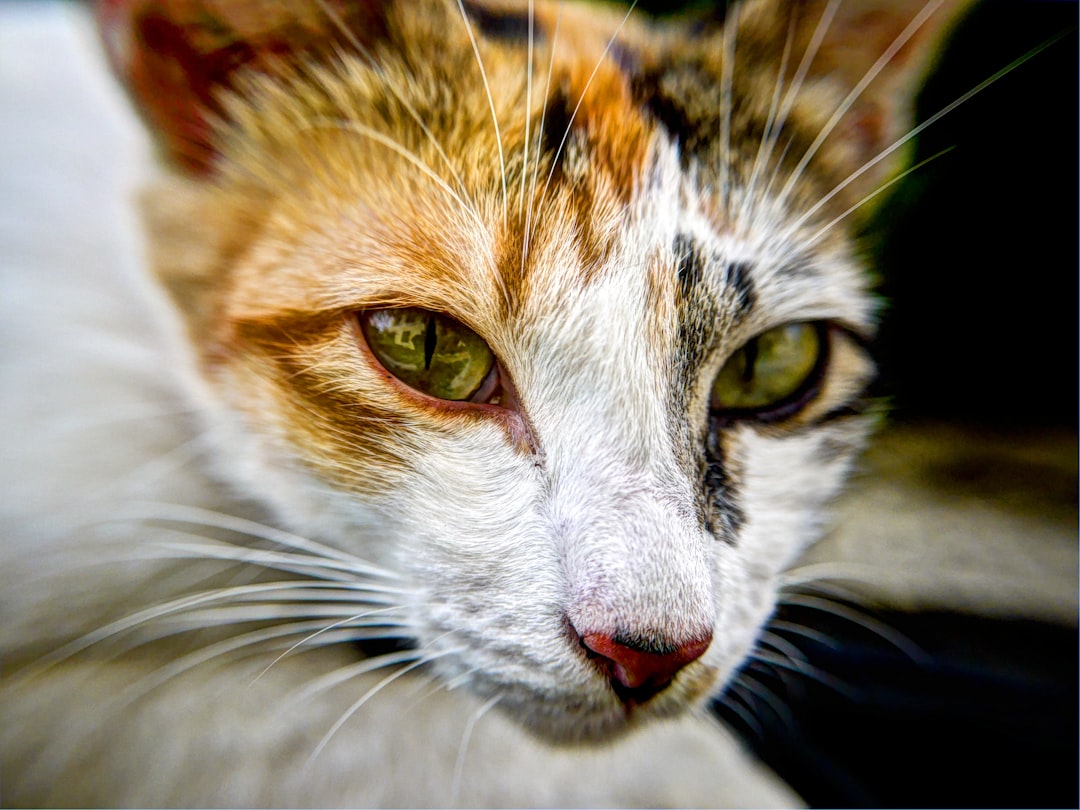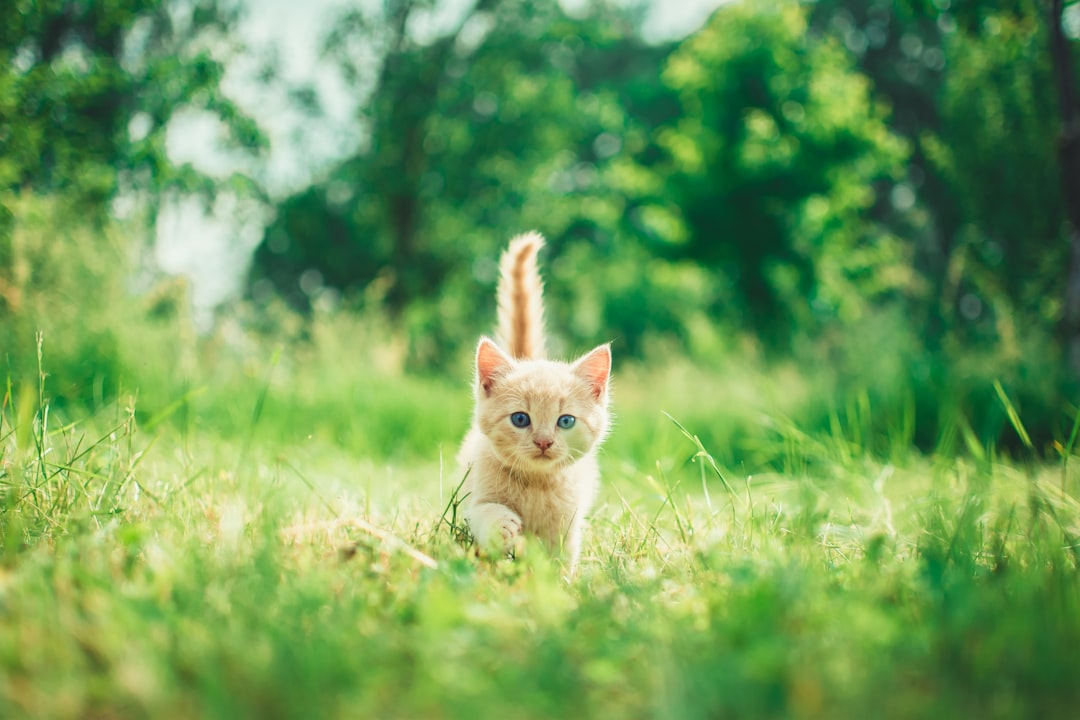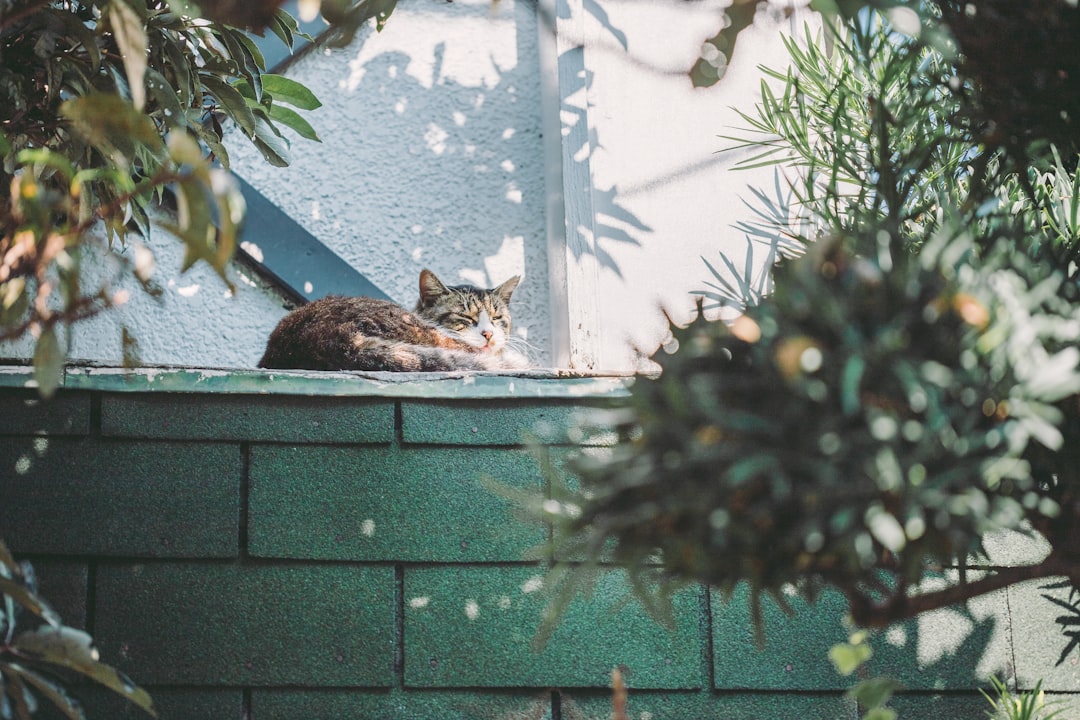In a world where pet nutrition is becoming increasingly prioritized, offering your feline friend a diet rich in flavor and health benefits is essential. Transitioning to cooked cat meals not only elevates your cat’s dining experience but also ensures they receive a well-rounded, nutritious diet. Understanding the benefits of cooked meals, along with the key ingredients that provide essential nutrients, can help you whip up delicious recipes that cater to your cat’s specific needs. However, it’s important to navigate potential pitfalls, such as common mistakes to avoid and proper storage practices. In this post, we will guide you through everything from meal preparation to consulting with your veterinarian, ensuring that your furry companion enjoys the best culinary experience while staying healthy and happy.
The Benefits of Cooked Cat Meals
When considering the diet for your feline companion, cooked cat meals offer a plethora of benefits that can contribute to their overall health and well-being. By opting for home-prepared meals, pet owners can ensure their cats receive high-quality ingredients tailored to their specific needs.
Nutritional Advantages of Cooked Cat Meals
Cooked cat meals provide an assortment of nutritional benefits, including:
- Fresh Ingredients: Using quality proteins and vegetables ensures your cat receives essential vitamins and minerals.
- Controlled Portions: Home cooking allows you to customize portion sizes based on your cat’s weight and dietary requirements.
- No Additives or Preservatives: Cooking at home minimizes the risk of your cat consuming harmful chemicals often found in commercial pet foods.
Improved Digestibility and Health
Another critical aspect of cooked cat meals is the potential for better digestibility, resulting in:
- Easier Absorption: Cooking breaks down proteins and nutrients, making it easier for cats to absorb them.
- Reduced Allergens: Homemade meals can eliminate certain allergens present in commercial foods, aiding in overall health improvement.
- Enhanced Hydration: When preparing meals with added moisture, you promote hydration, which is essential for kidney health.
Weight Management Through Home-Cooked Options
One of the key advantages of cooked meals is the ability to manage your cat’s weight effectively:
- Custom Recipes: Tailor meals specifically for weight loss or maintenance, based on your cat’s individual needs.
- Control Over Ingredients: Choose lean meats and healthy fats for a balanced diet that promotes a healthy weight.
- Regular Monitoring: Home cooking allows you to track your cat’s consumption, adjust recipes as needed, and maintain an ideal weight.
By incorporating cooked meals into your cat’s diet, you can enjoy peace of mind knowing you are providing them with nutritious, tasty meals that promote their well-being.
Key Ingredients for Nutritious Cooked Cat Meals
Crafting nutritious cooked cat meals requires a careful selection of ingredients to ensure your feline friend receives a balanced diet. Below are some key components to consider:
Essential Proteins for Feline Diets
Felines are obligate carnivores, meaning their diet must primarily consist of animal proteins. Here are some excellent sources of protein for cooked cat meals:
- Chicken: Lean and easily digestible, providing essential amino acids.
- Turkey: A great alternative, rich in protein and low in fat.
- Fish: Salmon or tuna supply omega-3 fatty acids beneficial for skin and coat health.
- Beef: A hearty option, high in iron and essential nutrients.
Tip: Always cook proteins thoroughly to eliminate harmful bacteria and ensure safety.
Incorporating Vegetables Safely
While cats don’t require vegetables as part of their diet, adding small amounts can provide beneficial nutrients:
- Carrots: Rich in beta-carotene and fiber.
- Pumpkin: A great source of dietary fiber for digestion.
- Spinach: Packed with vitamins, but should be offered in moderation due to oxalates.
Important: Avoid toxic veggies such as onions, garlic, and excessive amounts of corn.
Healthy Fats and Their Benefits
Including healthy fats is crucial for your cat’s energy and overall health:
- Fish Oil: Provides omega fatty acids, promoting heart health and a shiny coat.
- Coconut Oil: Supports joint health and can improve digestion.
- Chicken Fat: A source of energy and adds richness to meals.
Nutritional Table for Quick Reference:
| Ingredient | Primary Benefit | Recommended Amount |
|---|---|---|
| Chicken | High protein and amino acids | 1/3 of a meal |
| Carrots | Fiber and beta-carotene | 1-2 tablespoons (cooked) |
| Fish Oil | Omega-3 fatty acids for skin health | 1 tsp per meal |
Utilizing these ingredients properly not only keeps your cat healthy but also makes mealtime delightful and satisfying.
Balancing Nutritional Needs: Cooked Cat Meal Recipes
Creating Balanced Meals at Home
Creating balanced meals for felines at home involves combining protein, fats, and carbohydrates to meet their nutritional requirements. Here’s a structured approach:
- Protein Sources: Always prioritize lean meats like chicken, turkey, and fish as they provide essential amino acids.
- Healthy Fats: Include sources such as fish oil or chicken fat, which contribute to a shiny coat and healthy skin.
- Carbohydrates: Opt for ingredients like pumpkin or sweet potatoes that are digestible and provide fiber for gut health.
Sample Recipes for Optimal Nutrition
To give inspiration on how to create these meals, here are a few simple recipes:
| Recipe Name | Primary Protein | Additional Ingredients |
|---|---|---|
| Chicken Delight | Chicken | Sweet potatoes, carrots, and fish oil |
| Turkey Treats | Turkey | Pumpkin puree, spinach, and chicken fat |
| Fish Feast | Salmon | Quinoa, peas, and a pinch of catnip |
Cooking Directions:
- Boil or bake the protein source thoroughly.
- Chop vegetables into small, cat-friendly pieces.
- Mix ingredients, ensuring the food is well-balanced and cooled before serving.
Considering Age and Health in Meal Prep
Feline nutritional needs can drastically shift based on their age and health conditions:
- Kittens: Require higher protein and fat levels for growth. Include more calorie-dense foods.
- Adult Cats: Focus on balanced meals that support maintaining a healthy weight.
- Senior Cats: Opt for softer, easier-to-digest ingredients and possibly lower fat content to prevent obesity.
Incorporating these considerations ensures that meals are not just satisfying but also tailored to promote optimal health in every life stage of your feline companion.
Common Mistakes to Avoid with Cooked Cat Meals
When preparing cooked meals for your feline friend, it’s essential to be aware of common pitfalls that can negatively impact their health and happiness. Below are three major mistakes cat owners often make:
Over-Seasoning and Its Effects
Using seasoning can enhance flavor for humans, but most cats have sensitive palates. Key issues include:
- Toxic Ingredients: Certain spices and herbs can be harmful, such as garlic and onion.
- Salt Intake: Excessive salt can lead to dehydration and kidney problems.
- Digestive Upset: Over-seasoned meals may cause vomiting or diarrhea.
Neglecting Essential Nutrients
Cats have unique dietary needs. Avoid these nutritional missteps:
- Lack of Protein: Cats require high-quality animal protein for energy.
- Missing Vitamins: Important vitamins, particularly A and B vitamins, need to be included.
- Imbalanced Fatty Acids: Ensure a proper ratio of omega-3 to omega-6 fatty acids for a healthy coat.
Improper Cooking Techniques
How you cook your ingredients matters greatly. Here are some key approaches:
| Technique | Recommended Approach | Mistakes to Avoid |
|---|---|---|
| Boiling | Use minimal water | Overcooking, which can deplete nutrients |
| Baking | Moderate temperatures | Using excessive fats |
| Steaming | Retains nutrients | Leaving out proteins |
By avoiding these common mistakes, you can create nourishing cooked meals that cater to your cat’s health, ensuring they remain lively and well-fed.
Transitioning Your Cat to Cooked Meals
Transitioning your feline friend to cooked meals can be a rewarding experience, both for you and your cat. The process, however, must be approached with care to ensure a smooth adjustment.
Steps for a Smooth Transition
- Gradual Introduction: Start by mixing a small amount of cooked food with your cat’s regular kibble. Gradually increase the proportion of cooked food over a week or two.
- Consistent Feeding Schedule: Stick to regular feeding times to create a routine. This helps your cat anticipate meals and decreases anxiety.
- Hydration: Provide ample fresh water, as cooked meals might not provide enough moisture if they’re not wet foods.
Monitoring Your Cat’s Response
- Observe Behavior: Watch for signs of acceptance or rejection, such as sniffing, pawing, or eating.
- Check Health: Monitor stool consistency and general energy levels. Healthy waste should be firm and moist.
- Adjust Accordingly: If your cat shows signs of digestive discomfort, consider reducing the amount of new food and reintroducing it more slowly.
Selecting the Right Time for Change
- Avoid Stressful Periods: Transition during a time when your cat is not experiencing other stressors, such as a move or vet visit.
- Choose Optimal Seasons: Cats can be more receptive to changes in their diet during calm periods, such as cooler months when they tend to seek warmth and comfort in their routines.
- Early to Mid-Day Feedings: Serve meals when your cat is most active and likely to be hungry, improving the chances of acceptance.
By following these guidelines, you can help your cat embrace the change to delicious and healthier cooked meals with ease, making the experience enjoyable and beneficial for both of you.
How to Safely Store Cooked Cat Meals
Best Practices for Food Storage
Proper storage of cooked cat meals is essential to maintain freshness and nutrition. Follow these best practices:
- Use Airtight Containers: Invest in high-quality, airtight containers to keep food fresh and prevent contamination.
- Labeling: Date the containers to keep track of how long the food has been stored. This helps in ensuring your cat’s meals are safe.
- Cool Before Storing: Allow meals to cool completely before sealing them to prevent condensation, which can lead to spoilage.
Understanding Shelf Life
Knowing the shelf life of cooked cat meals is crucial for your feline’s health. Here’s a basic guideline:
| Type of Meal | Refrigerator (3-4°C / 37-39°F) | Freezer (-18°C / 0°F) |
|---|---|---|
| Homemade Cooked Meals | 3-5 days | Up to 3 months |
| Store-Bought Cooked Meals | Check packaging for dates | 6-12 months depending on ingredients |
Ensure that you use the meals within these time frames. Always prioritize your cat’s safety.
Reheating Leftovers Safely
Reheating is an essential step when serving previously cooked meals. Here’s how to do it safely:
- Microwave: Use a microwave-safe dish, cover it loosely, and reheat until warm, stirring occasionally.
- Stovetop: Place in a small pot over low heat, stirring occasionally until heated through.
- Check Temperature: Ensure the meal reaches at least 165°F (74°C) to kill any bacteria.
- Let it Cool: Before serving to your cat, allow the food to cool slightly, preventing burns.
Following these guidelines will ensure that your feline friend enjoys its meals safely while retaining all the essential nutrients.
Homemade Cooked Cat Treats
Simple Recipes for Healthy Treats
Creating homemade cooked cat treats can be both fun and rewarding. Here are a few simple recipes:
- Chicken Bites
- Ingredients: 1 cup cooked chicken, shredded; 1 tablespoon catnip; 1/2 cup oat flour.
- Instructions: Mix all ingredients into a dough-like consistency, form small balls, and bake at 350°F (175°C) for 20-25 minutes.
- Fishy Delights
- Ingredients: 1 cup canned fish (in water); 1/4 cup parsley; 1 tablespoon coconut oil.
- Instructions: Blend the fish and parsley, mix with coconut oil, and drop spoonfuls onto a baking sheet. Bake at 350°F (175°C) for 15 minutes.
- Sweet Potato Snacks
- Ingredients: 1 cup cooked sweet potato; 1/4 cup cornmeal; 1 egg.
- Instructions: Mash the sweet potato and combine with cornmeal and egg. Shape into small discs and bake at 350°F (175°C) for 30 minutes.
Benefits of Homemade Over Store-Bought
Homemade treats can provide various advantages, including:
| Benefit | Description |
|---|---|
| Control Over Ingredients | You choose what goes into each treat, avoiding fillers. |
| Freshness | Fresh ingredients can enhance flavor and nutritional value. |
| Customization | Tailor treats to your cat’s taste preferences and dietary needs. |
| Cost-Effective | Often cheaper than purchasing premium commercial options. |
Incorporating Treats into Your Cat’s Diet
Introducing treats into your cat’s diet can be done gradually:
- Start Slow: Introduce one treat at a time to monitor for reactions.
- Use as Rewards: Employ treats during training or positive reinforcement.
- Limit Quantity: Treats should not exceed 10% of daily intake for a balanced diet.
By crafting homemade treats, you ensure deliciousness and healthiness in every bite!
Consulting with Your Veterinarian
When to Seek Professional Guidance
Before introducing any significant changes to your cat’s diet, particularly when considering cooked meals, it’s crucial to consult with your veterinarian. They can provide tailored advice based on your pet’s unique health profile. Consider seeking guidance when:
- Introducing new ingredients: Some ingredients might not be suitable for all cats.
- Dealing with health conditions: Cats with conditions like diabetes or kidney disease may require specialized diets.
- Planning a homemade meal regimen: Transitioning from commercial cat food to homemade options should be approached cautiously.
Discussing Dietary Changes
During your consultation, discuss the potential benefits and risks associated with switching to cooked cat meals. Key matters to address include:
- Nutritional balance: Ensure the meals provide all necessary nutrients.
- Allergic reactions: Identify any potential food allergies your cat may have.
- Portion sizes: Your veterinarian can suggest proper portion sizes to prevent obesity or malnutrition.
Monitoring Health After Transition
Post-transition, maintaining an open line of communication with your veterinarian is essential. Regular check-ups can help:
- Assess weight changes: Monitor if the new diet maintains an ideal weight for your feline.
- Evaluate overall health: Regular evaluations can identify any adverse reactions.
- Adjust the meal plan as needed: Based on your cat’s health status, your vet may recommend adjustments to the diet.
By discussing these aspects with your veterinarian, you can ensure a smooth transition to cooked meals that promote the overall health and happiness of your feline friend.
Exploring Commercial Cooked Cat Meal Options
Evaluating Quality Ingredients in Brands
When it comes to selecting commercial cooked cat meals, quality ingredients should be your primary focus. Look for brands that emphasize:
- High-Quality Proteins: Ingredients like chicken, turkey, or fish should be the first listed on the label.
- Whole Grains and Vegetables: Opt for options containing brown rice or pumpkin for fiber.
- Essential Nutrients: Check for added vitamins and minerals, such as taurine, which is crucial for your cat’s heart and vision.
Comparing Homemade to Store-Bought
Understanding the pros and cons can help you make an informed choice between homemade and store-bought meals.
| Aspect | Homemade Meals | Store-Bought Meals |
|---|---|---|
| Control Over Ingredients | Complete control over what goes in your cat’s meal | Limited control; depend on the brand |
| Convenience | Time-consuming to prepare | Ready-to-serve |
| Nutritional Balance | Might require research to ensure balance | Often formulated by veterinarians |
Reading Labels for Health Assurance
Familiarizing yourself with food labels is essential for ensuring your cat receives the best nutrition. Pay attention to the following:
- Guaranteed Analysis: Look for moisture, protein, fat, and fiber content.
- Ingredient List: Familiarize yourself with ingredients you can pronounce. Avoid meals containing fillers or artificial preservatives.
- Manufacturer Information: Choose brands with a reputation for safety and nutrition, ideally with veterinary endorsements.
By critically evaluating commercial cooked cat meals, you enable your feline friend to enjoy not just tasty dishes, but also nutritious meals that meet their dietary needs.
Frequently Asked Questions
What are cooked cat meals and why are they beneficial for my cat?
Cooked cat meals are homemade food options that you prepare specifically for your feline friend. These meals can include a variety of ingredients such as meat, vegetables, and grains that provide a balanced diet tailored to your cat’s needs. Benefits include improved digestion, fresher ingredients, and a reduction in preservatives commonly found in commercial cat food. Moreover, cooking for your cat allows you to control the nutrient content and ensure that no harmful additives are included.
What ingredients should I include in cooked cat meals?
When preparing cooked meals for your cat, focus on high-quality protein sources such as chicken, turkey, fish, or beef. You can also incorporate small amounts of vegetables like carrots or peas for added nutrition. Remember to avoid toxic foods for cats, such as onions, garlic, grapes, and chocolate. It’s essential to balance protein with healthy fats and carbohydrates. Consulting with a veterinarian can help you create an optimal recipe that meets your cat’s nutritional requirements.
How do I transition my cat to a cooked meal diet?
Transitioning your cat to a cooked meal diet should be done gradually to avoid digestive upset. Start by mixing a small amount of the cooked meal with your cat’s current food, gradually increasing the proportion of the cooked food over several days to a week. Monitor your cat’s response, looking for any signs of digestive issues or reluctance to eat. Patience is key; some cats may take longer to adjust than others, so offer positive reinforcement and keep the experience stress-free.
Are there any common mistakes to avoid when cooking for my cat?
Yes, there are several common mistakes to avoid when cooking for your cat. These include not providing a balanced diet, relying too heavily on one type of ingredient, or failing to properly cook meats, which can harbor harmful bacteria. Additionally, avoid using seasonings, onions, or garlic, which can be toxic to cats. It’s also important to consult with a veterinarian to ensure that your recipes align with your cat’s specific health needs and dietary restrictions.
Can cooked meals completely replace commercial cat food?
Cooked meals can be a great supplement to a cat’s diet, but they should not completely replace commercial cat food without thorough planning. Commercial foods are formulated to meet all of your cat’s nutritional needs, and while home-cooked meals can enhance their diet, it can be challenging to provide the same balance of nutrients at home. If you choose to transition to a cooked-only diet, it’s advisable to do so under the guidance of a veterinarian to ensure comprehensive nutritional adequacy.



